Building blocks for location-based app experiences
At Radar, we tend to say location is complicated. That’s because it is. When users allow location access to their device, they’re initiating an elaborate process involving satellites, routers, cell towers, and more – all to try and provide the app requesting your location with a reasonably accurate signal of where in the world you are. Nevermind the fact that your physical location on the irregularly shaped ellipsoid we call Earth needs to be translated into a digital representation on an x/y coordinate system.
It follows that building an app of which location is a core component is complicated as well. You have a lot to think about: user experience, a permissioning flow, and the value that location access will bring your users. With these building blocks set, you’ll then need to consider how to build a successful marketing program based on location and your other business inputs. Apple and Google’s ever-changing privacy and app submission policies add an additional layer of complexity. Respecting user privacy is paramount and we applaud Apple and Google’s continued commitment in this area. These complications don’t need to spell doom for your location-based functionality adoption – it just means you need to work with a trusted location platform and give your users a clear and compelling reason to opt in.
In this guide, we’ll cover two aspects of building a location-based experience: requesting permissions and designing location-based marketing campaigns.
Location permissions in iOS and Android
Before digging in, let’s briefly recap the current state of iOS and Android location options. On iOS, users have three options for granting an app location access: “Allow Once,” which grants one-time use of location, “While Using,” which grants foreground permissions, and “Always,” which allows the app to access user location while in the background. A user must grant foreground permissions before an app can prompt for background permissions. iOS allows developers to provide a description in the native location prompt for apps to explain their use of location. Crucially, apps have one opportunity per permission level to surface the native prompt. Once a user denies permissions, the user can only grant them in the future via Settings.
On Android, things are largely similar, especially given recent updates to Android’s OS. That said, there are a few key differences from iOS:
- Users can only grant background location permissions (“Always”) via Settings as of Android 11. Apps can deep link users to the Settings page for a more seamless permissioning process.
- There’s no opportunity to modify or edit the explainer text on the native prompt — making a primer screen essential.
- Apps have two opportunities to surface the native prompt.
Best practices for requesting location permissions
At Radar we have extensive experience helping some of the world’s largest brands launch location-based solutions. Here, we’ve outlined some of the most successful strategies we’ve seen out in the field, broken down by different focus areas.
Why permissioning flows are important
Let’s start with the challenge: you need to provide clear value to drive user location sharing. This is clear when reviewing data of opt-in rates across platforms. Take a look at this chart courtesy of Airship that combined data from 144 million mobile app users around global engagement in 2020:
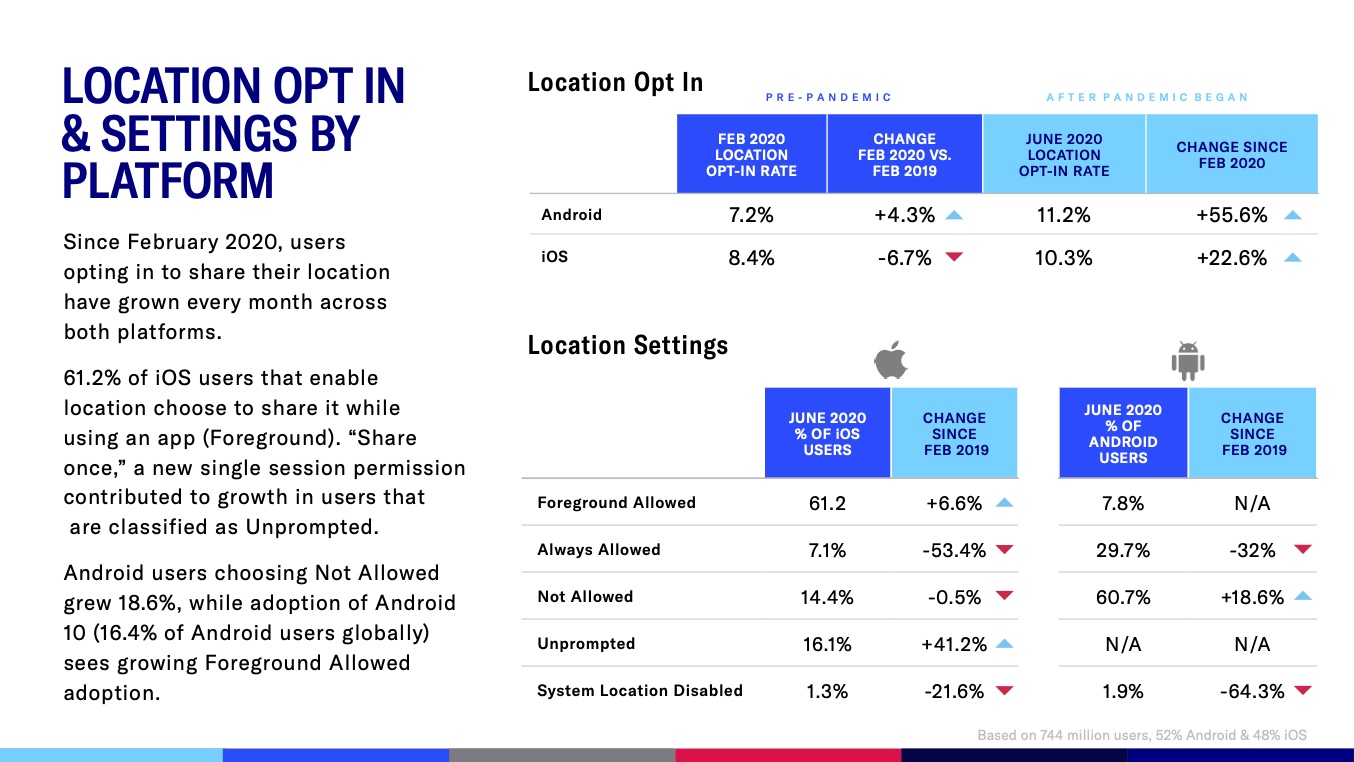
As the numbers show here, you’re largely facing an uphill battle when requesting location for your app. Some verticals will have an easier time than others. Weather apps, for example, have an implicit “Always On” use case because, for instance, users want to receive notifications 20 minutes before it’s going to rain. Weather and location are intricately linked — imagine a weather forecast without a map or a defined area.
Most app builders will need to surface their motivations for collecting location more explicitly. First, it’s essential that you survey your business to identify, prioritize, and build the location-based use cases that have the highest value add for your users. Crucially, don’t stop there. Build clear primers and prompts that clearly demonstrate the value that you are providing users from having their location data. Additionally, read about how other companies have applied location data to provide improved customer experiences.

Whataburger’s location primer is informative and concisely describes the benefits of enabling location services.
Building a location permission flow
Now that you’ve uncovered your strong location-based use cases and value adds, you need to build a permissioning flow that optimizes opt-in rates. What do we mean by permissioning flow?
Try going to the Apple App Store or Google Play Store and downloading a top app with a location component that you haven’t previously downloaded. Apps that request both foreground (i.e. while the app is open) location and background (i.e. while the app is open or while it’s backgrounded) location typically prompt for foreground first, and on receiving that permission, will then prompt for background.
Many apps, however, only request foreground location. See the example of Panera below, which incorporates what we call a primer screen to provide further context before the native prompt is surfaced.

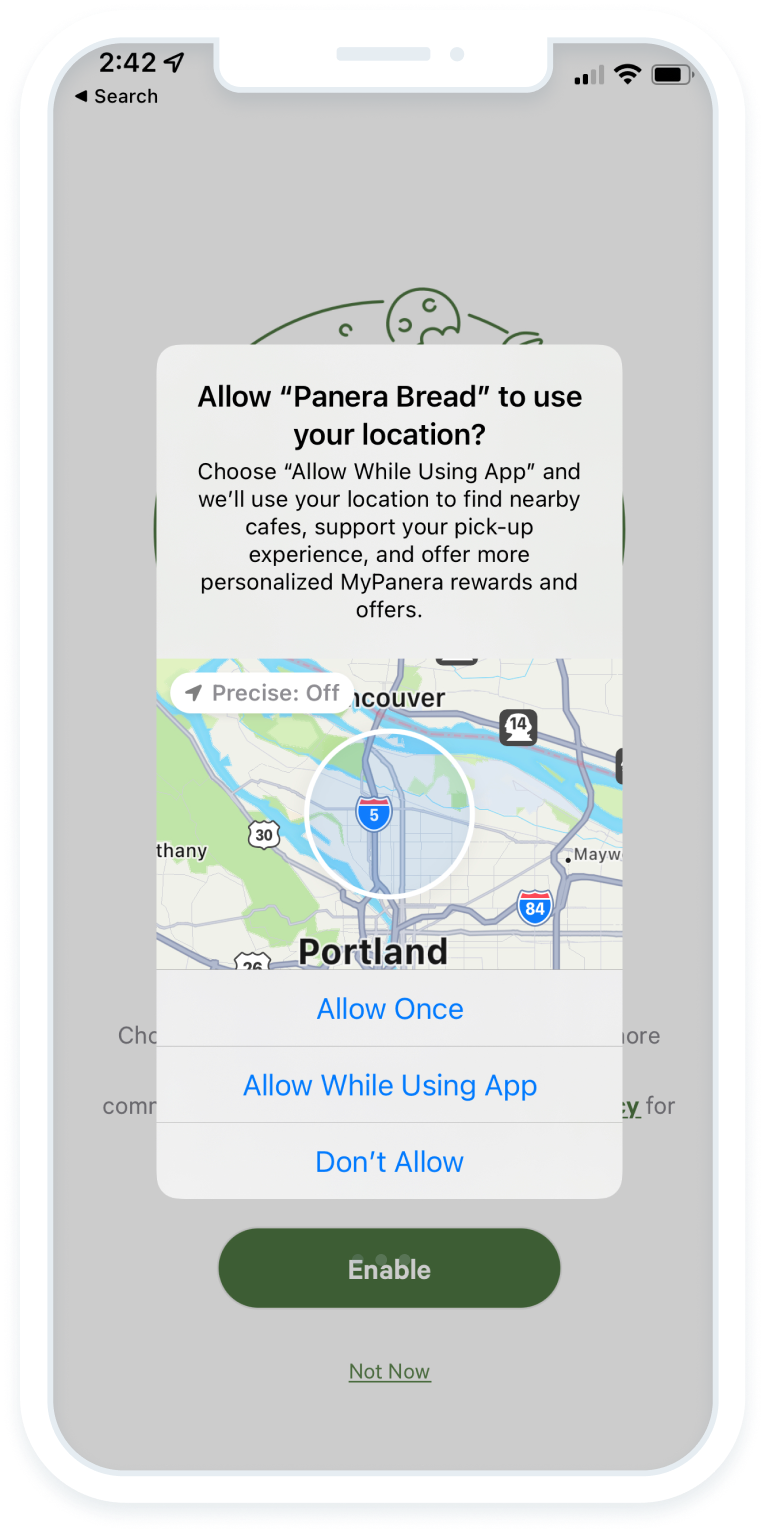
Panera both surfaces a primer screen complete with a link to their Privacy Policy to provide and a detailed explainer in the native prompt itself explaining the need for full foreground location permissions.
At Radar, we’ve found that following three core tenets will lead to higher opt-in rates, no matter the industry you operate in:
- Transparency: Be open about why you’re requesting location information and how it will be used. Use a primer screen to give more details on the request. Include a link to your privacy policy with relevant information on how location information is and is not used.
- Value: Explain how enabling location services will help your users receive the best possible app experience. Offer functionality and features that are enhanced by location. The Weather app below above is a great example of explaining and showing value.
- Timeliness: Ask the user while they’re engaging with a feature that requires location services. This helps users clearly see the utility of sharing their location.
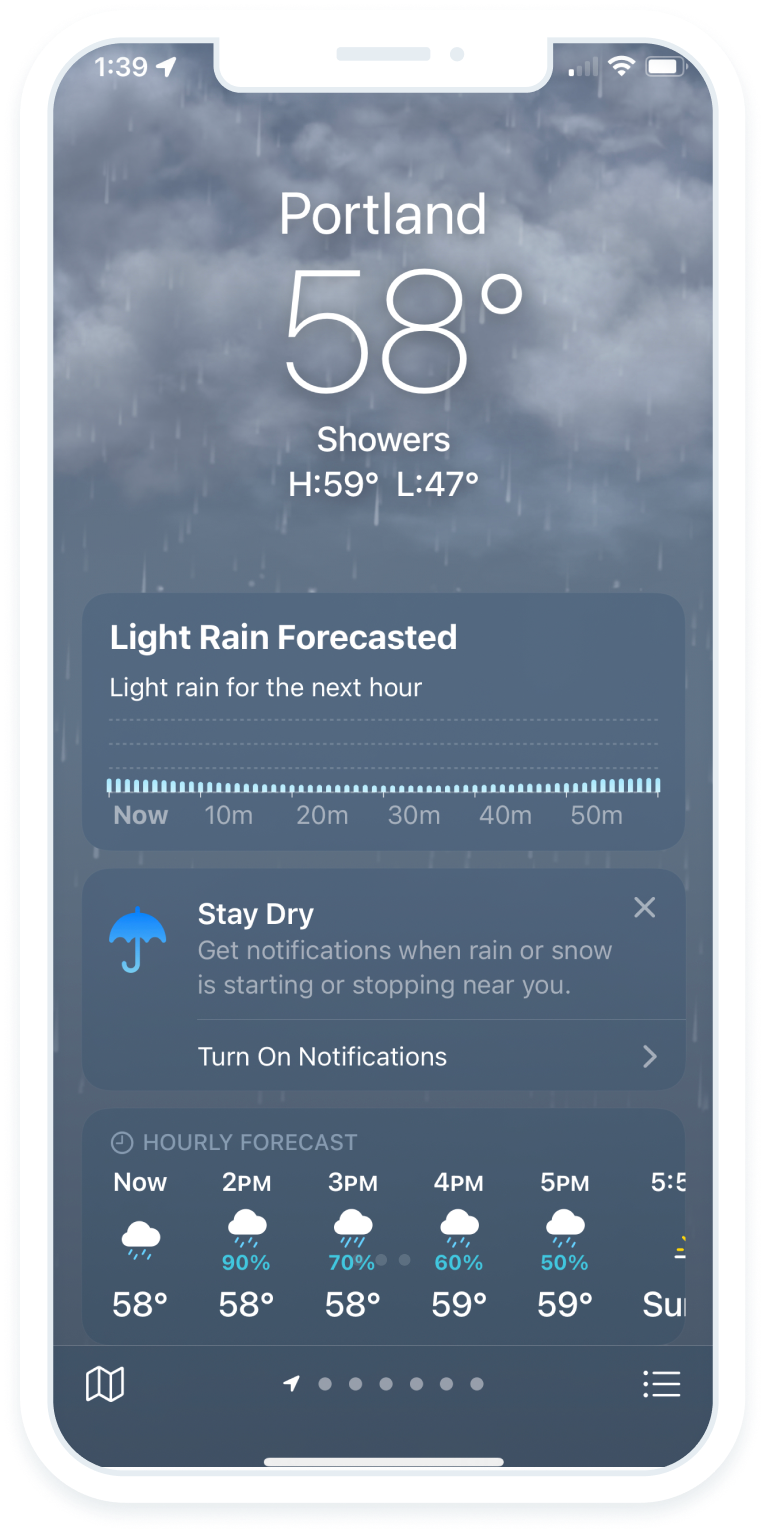
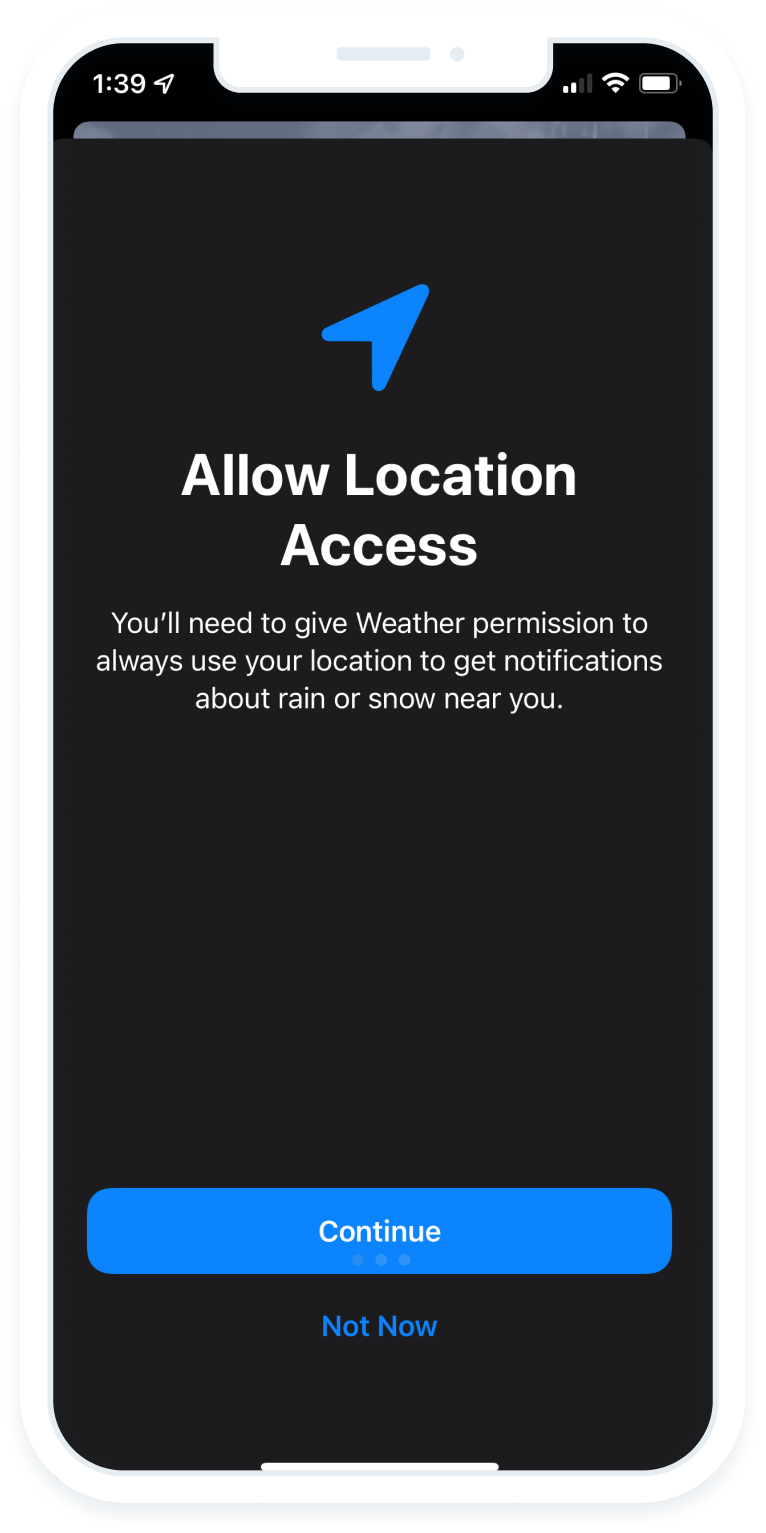
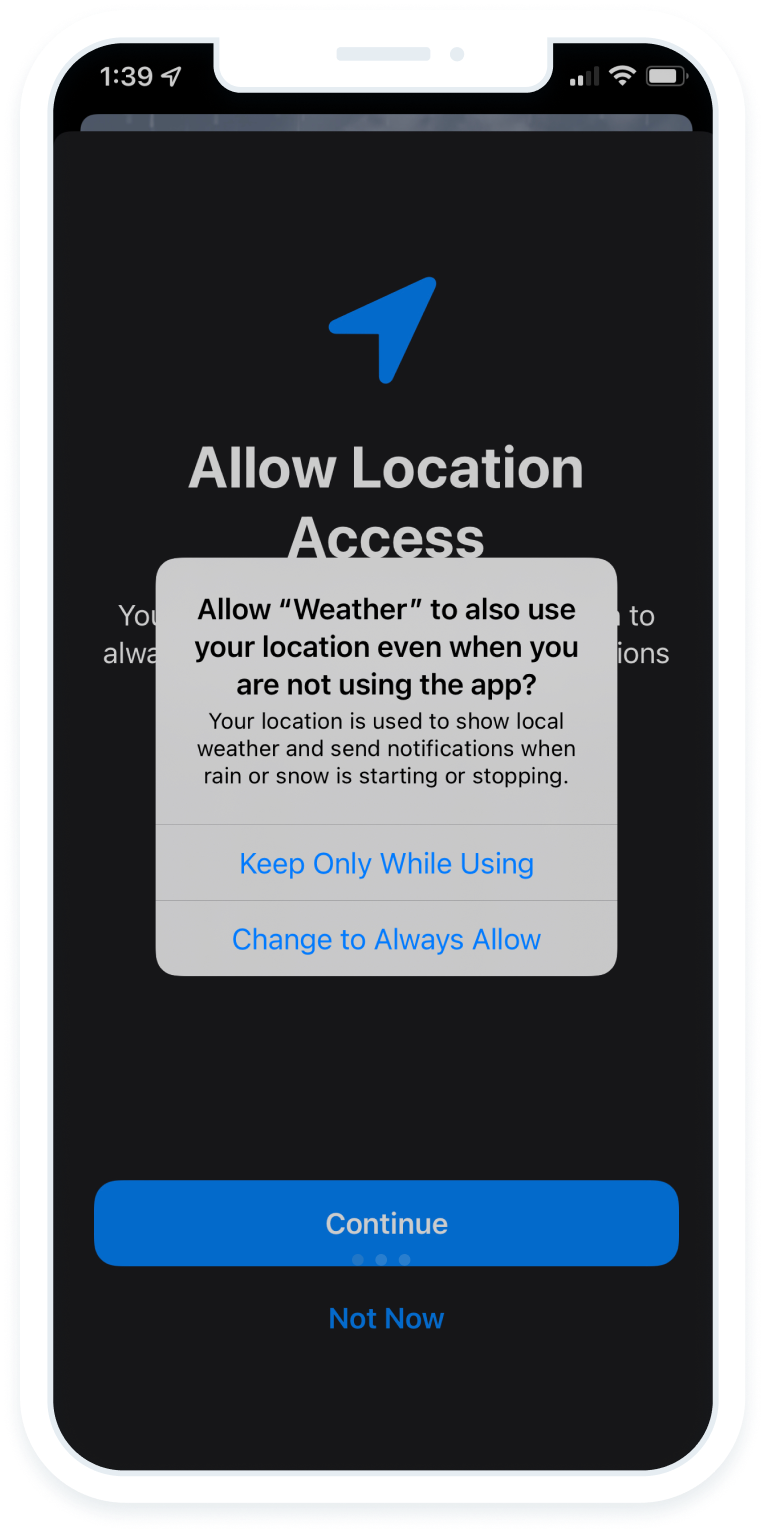
A good example of value-based location prompting. In this case, Apple’s Weather app drives background location opt-in by offering a valuable feature (i.e. weather notifications based on location).
Location-based marketing
.png)
Now that you’ve received opt-in from users, how can you build thoughtful marketing campaigns that leverage location data from Radar? While marketers have found success with personalized messaging, it can be hard to break through the noise. Many leading B2C brands now use location-based marketing to deliver timely notifications to customers in the right place and time.
Location data can be applied to a range of marketing approaches: in-store promotions, loyalty campaigns, regional promotions, competitive campaigns, and more. As you’re thinking about new ways to reach customers in the moments that matter, consider the value these touchpoints can add to their experiences with your brand. While location-based services can drive revenue, they can also give your brand new ways to offer incentives to keep customers coming back. New features improving the convenience of in-store shopping and order pickup have been shown to drive customer loyalty and repeat business – delighting your customers and increasing revenue.
To start driving location-based experiences, start with one of our pre-built integrations with partners such as Iterable, Braze, Airship, and many more, or build your own to your systems using webhooks.
Radar’s leading geofencing platform enables businesses to offer a range of new impactful experiences for customers while driving revenue and increasing operational efficiencies. Get in touch with our sales team to learn more.